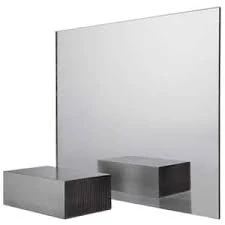

Reflective Toughened Glass A Modern Innovation in Architecture and Design
In recent years, the architectural and design landscape has witnessed a transformative shift with the introduction of reflective toughened glass. This innovative material not only enhances aesthetic appeal but also introduces a multitude of functional benefits that cater to the demands of modern construction. Understanding the properties, benefits, and applications of reflective toughened glass can provide insights into its growing popularity in various sectors.
What is Reflective Toughened Glass?
Reflective toughened glass is a specialized form of glass that undergoes a toughening process to increase its strength and thermal resistance. The toughness is achieved through a process of heating and then rapidly cooling the glass, which creates internal stresses that enhance its resilience against impacts, temperature changes, and other forms of mechanical stress. The reflective coating applied to one or more surfaces of the glass serves multiple purposes, including privacy, heat control, and glare reduction.
Key Benefits of Reflective Toughened Glass
1. Enhanced Durability One of the primary advantages of reflective toughened glass is its exceptional strength. It is designed to withstand higher levels of stress compared to standard glass, making it ideal for high-rise buildings, facades, and areas exposed to external forces. Its ability to resist breakage makes it a preferred choice in locations where safety is paramount.
2. Energy Efficiency The reflective coating significantly reduces the amount of solar heat entering a building. This property contributes to improved energy efficiency, as it lessens the reliance on air conditioning and other cooling methods during warmer months. Consequently, reflective toughened glass can lead to reduced energy consumption, which is beneficial for both the environment and the economic bottom line of building owners.
3. Aesthetic Appeal Reflective toughened glass offers a sleek, modern look that can elevate the aesthetics of any structure. Its reflective surface allows buildings to blend seamlessly with their surroundings, enhancing the visual impact of architectural designs. This has made it a popular choice among architects and interior designers aiming to create striking contemporary spaces.

4. Privacy The reflective quality of this glass provides a degree of privacy for occupants without the need for additional window treatments. During the day, the reflective surface limits the ability of outsiders to see inside, while still allowing natural light to enter. This is particularly advantageous for commercial buildings, offices, and residential properties situated in urban environments.
5. UV Protection Reflective toughened glass helps to block harmful ultraviolet (UV) rays, protecting both the occupants and the interior furnishings of a building from potential damage over time. This feature is especially important in environments with significant sun exposure, as UV rays can fade artwork, fabrics, and other materials.
Applications of Reflective Toughened Glass
The versatility of reflective toughened glass allows it to be used in a wide range of applications. High-rise buildings often employ it for their facades to achieve both aesthetic value and functional benefits like glare reduction and heat control. Moreover, this glass is common in commercial buildings, where large glass surfaces enhance visibility and visibility while ensuring occupant comfort.
Additionally, reflective toughened glass can be found in canopies, skylights, and curtain walls, making it suitable for both residential and commercial projects. Its properties also make it ideal for balustrades, interior partitions, and glass doors, where safety and durability are critical.
Conclusion
Reflective toughened glass represents a significant advancement in building materials that merges functionality with modern design. Its strength, energy efficiency, aesthetic appeal, and privacy features make it a preferred choice for architects and builders aiming to create innovative and sustainable structures. As trends toward eco-friendly and visually appealing architecture continue to grow, reflective toughened glass is poised to play a vital role in the future of construction and design. Embracing this material can lead to increased safety, lower energy costs, and remarkable visual impact, making it a quintessential element in modern architectural practices.